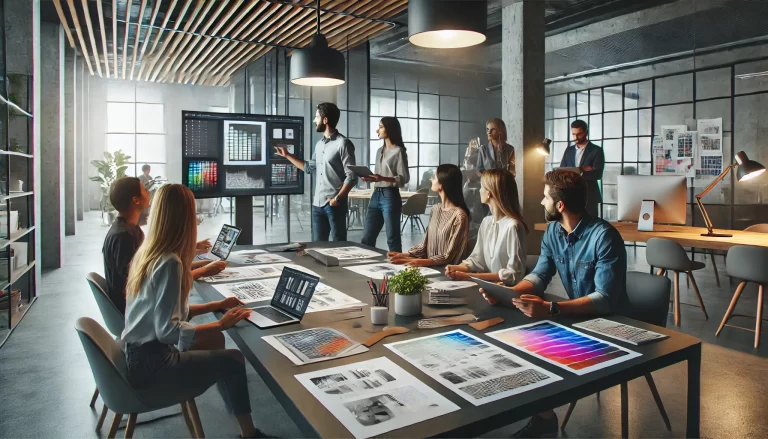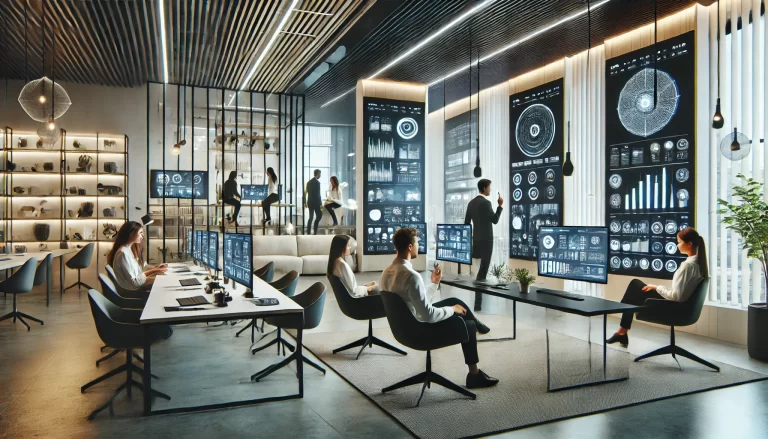What Are the Most In-Demand Design Skills in 2025?

The design industry is constantly evolving, driven by technological advancements and shifting consumer expectations. As we move into 2025, designers must stay ahead of the curve by mastering the most sought-after skills. Whether you’re a graphic designer, UX/UI expert, or interior designer, these in-demand skills will help you stay competitive in the industry.
1. UX/UI Design and Human-Centered Design
User Experience (UX) and User Interface (UI) design remain critical as businesses prioritize digital interactions.
• Wireframing and Prototyping: Tools like Figma, Adobe XD, and Sketch are essential.
• Accessibility and Inclusivity: Designing for all users, including those with disabilities.
• Microinteractions and Motion Design: Enhancing user engagement with animations.
2. Artificial Intelligence (AI) and Automation in Design
AI-driven tools are revolutionizing design workflows and creativity.
• AI-powered Design Tools: Midjourney, Adobe Firefly, and DALL·E for concept generation.
• Generative Design: Using AI to automate design variations.
• Chatbots and Voice UI: Integrating conversational interfaces into digital experiences.
3. 3D Design and Augmented Reality (AR)
With the rise of immersive experiences, 3D and AR are becoming indispensable.
• 3D Modeling and Rendering: Mastering tools like Blender, Cinema 4D, and Autodesk Maya.
• AR Integration: Creating interactive product experiences with Apple’s ARKit or Google’s ARCore.
• Virtual Reality (VR): Designing immersive environments for gaming, retail, and architecture.
4. Motion Graphics and Animation
The demand for dynamic visual content is growing across social media, advertising, and branding.
• 2D Animation: Using Adobe After Effects and Toon Boom Harmony.
• 3D Motion Graphics: Skills in Cinema 4D, Houdini, and Blender.
• Kinetic Typography: Creating engaging text-based animations.
5. Sustainable and Eco-Friendly Design
Consumers and brands are prioritizing sustainability in design.
• Sustainable Materials and Processes: Reducing environmental impact in product and interior design.
• Eco-Conscious Branding: Designing packaging and visuals that align with green initiatives.
• Circular Design Principles: Creating designs with minimal waste and maximum recyclability.
6. Coding for Designers
Understanding basic coding principles is a valuable asset in digital design.
• HTML, CSS, and JavaScript: Essential for web designers.
• No-Code and Low-Code Platforms: Tools like Webflow, Bubble, and Framer for rapid prototyping.
• Creative Coding: Using Processing, p5.js, or TouchDesigner for generative art.
7. Branding and Visual Storytelling
A strong brand identity remains crucial for businesses in 2025.
• Design Systems: Creating cohesive brand experiences.
• Visual Storytelling Techniques: Crafting compelling narratives through design.
• Typography and Color Psychology: Understanding how design choices influence emotions.
8. Data Visualization and Infographic Design
As data becomes more critical in decision-making, presenting it effectively is a valuable skill.
• Dashboard Design: Using Tableau, Power BI, and Google Data Studio.
• Infographic Creation: Tools like Adobe Illustrator and Canva.
• Interactive Data Experiences: Designing engaging ways to present information.
9. Social Media and Digital Marketing Design
Designers must align visuals with evolving social media trends and digital marketing needs.
• Short-Form Video Editing: Creating content for TikTok, Instagram Reels, and YouTube Shorts.
• Ad Creative Design: Designing effective performance-based ad creatives.
• Influencer Branding: Collaborating on personal branding projects.
10. Soft Skills: Adaptability, Collaboration, and Problem-Solving
Technical skills alone aren’t enough—designers must also excel in:
• Adaptability to New Technologies: Keeping up with AI and emerging tools.
• Cross-Disciplinary Collaboration: Working with developers, marketers, and business strategists.
• Critical Thinking and Problem-Solving: Addressing user and business needs effectively.
Final Thoughts
The design landscape in 2025 is shaped by technological innovation, user-centric approaches, and sustainability. Staying ahead requires continuous learning and skill refinement. By mastering these in-demand skills, designers can ensure their relevance and success in an ever-evolving industry.






